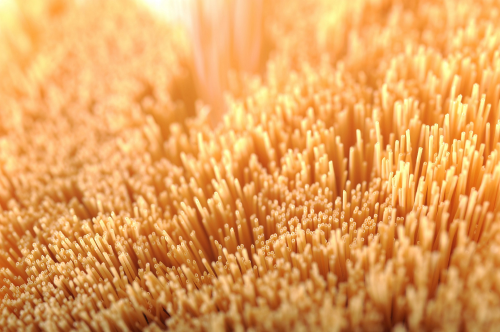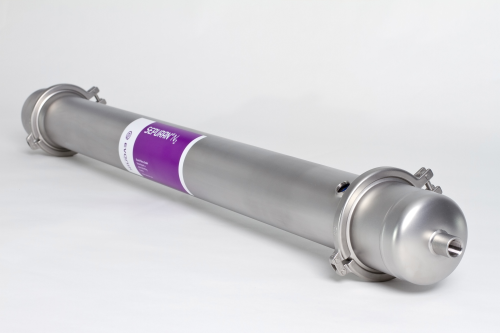

Evonik says the advantages of this new technology over classical cryogenic air separation as well as current membrane processes are its greater flexibility and lower costs. It can be combined with existing systems, for example to meet peak demand, or directly connected to compressed air systems to supply nitrogen. The hollow-fiber membrane at the heart of the technology consists of polyimide, a high-performance polymer that is highly chemically and thermally stable. The hollow fibers are bundled together, embedded in a resin developed specially for the purpose, and enclosed in a stainless steel module. The membrane module, approximately 1.3 m long, contains several tens of thousands of these fine tubes, each of diameter 0.5 mm. For separation of nitrogen, compressed air is fed into the hollow-fiber membranes. Due to their smaller size, oxygen molecules can pass through the membrane more easily than nitrogen molecules. This leads to enrichment of nitrogen to the desired purity inside the hollow fibers, while an O2-rich airstream is generated on the outside. The purity of the N2 can be regulated via the flow rate of the incoming air: the lower this flow rate, the higher is the quality of the nitrogen. The new technology from Evonik has been on the market since early 2016.






